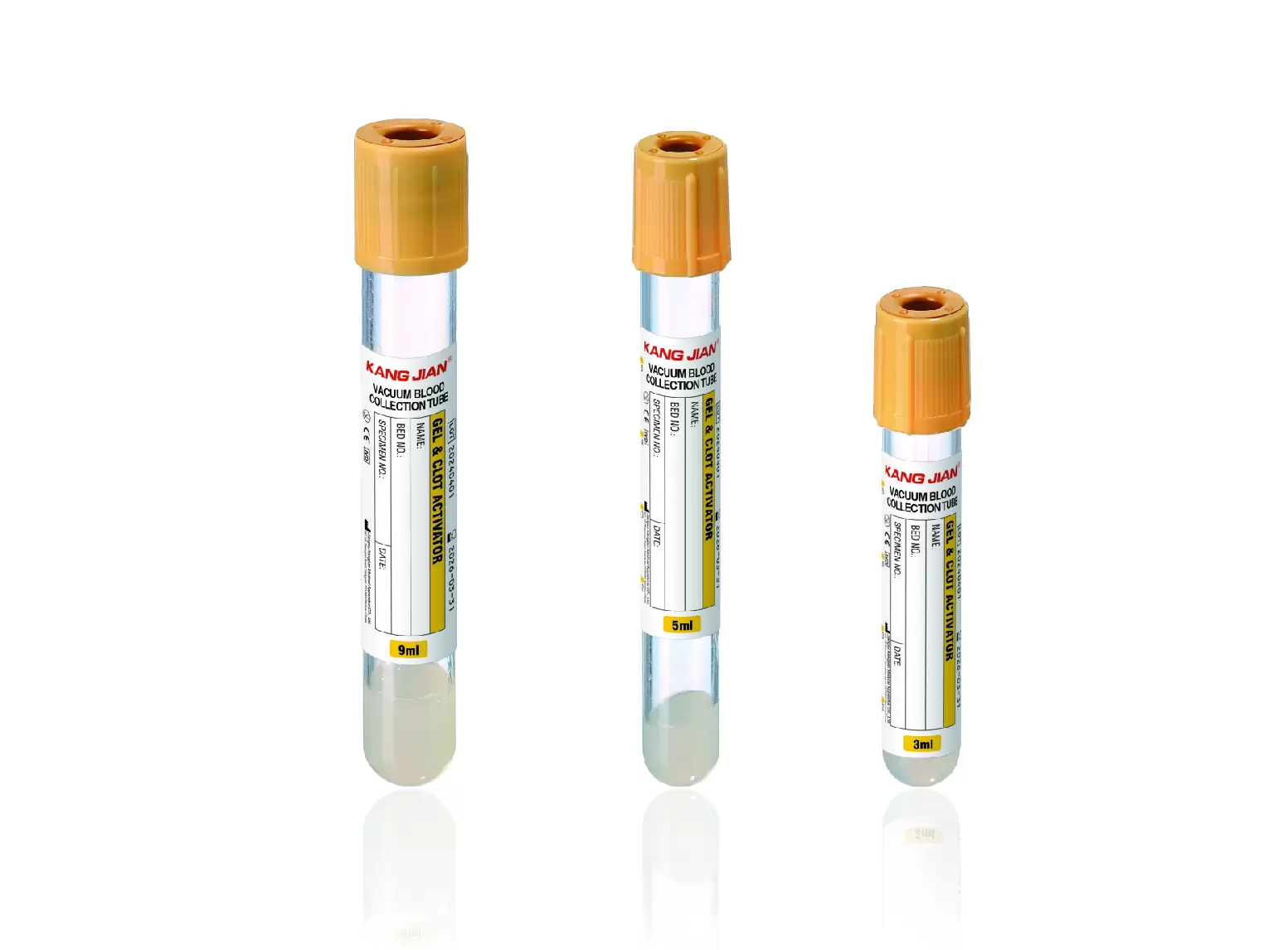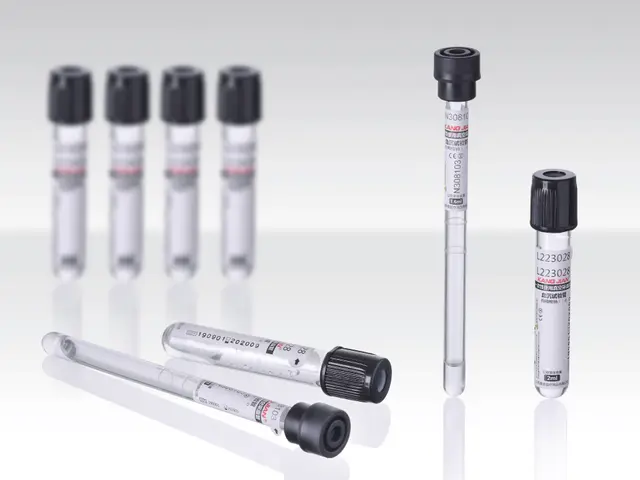Enhancing Diagnostic Accuracy with Gel Clot Activator Tubes in Clinical Laboratories
In modern clinical laboratories, precise and efficient blood collection is vital for the accurate diagnosis and monitoring of a wide range of health conditions. One of the key components of successful blood collection is the use of specialized tubes designed to facilitate the separation of blood components and promote optimal test results. Among these, the gel clot activator tube plays a pivotal role in ensuring fast, reliable, and accurate blood testing. These tubes are used widely in clinical diagnostics, offering unique advantages over traditional blood collection tubes. This article Kangjian will explore the importance of the gel clot activator tube in modern healthcare, focusing on how it enhances blood sample processing, its benefits, and the clinical applications where it is most effective. We will dive into its specific function within the laboratory setting and discuss how it supports medical professionals in providing accurate and timely test results for patients. Understanding the value and functionality of this essential tool will help illuminate its critical role in today's medical landscape.
What is a Gel Clot Activator Tube?

A gel clot activator tube is a type of blood collection tube that contains a gel substance designed to separate blood cells from the serum or plasma during centrifugation. It is typically used for blood tests that require serum or plasma samples, including many clinical chemistry, immunology, and serology tests. The tube is engineered with a clot activator, which accelerates the clotting process of the blood, while the gel serves as a barrier that forms between the serum or plasma and the blood cells once the sample is processed. These tubes are most commonly used in diagnostic labs to separate the serum from the blood cells after blood collection. After the blood is drawn, the gel clot activator tube is placed into a centrifuge. The centrifugation process causes the blood to separate into distinct layers. The clot forms at the bottom of the tube, while the serum is separated above the gel barrier. This separation is crucial for obtaining clear, uncontaminated serum or plasma, which is essential for accurate test results.
The gel clot activator tube is particularly valued for its ability to simplify the sample preparation process, reduce handling time, and enhance the quality of the test results. The gel's ability to create a reliable separation between blood components helps eliminate contamination and improves the consistency of laboratory analyses.
Clinical Applications of Gel Clot Activator Tubes
Gel clot activator tubes are commonly used in a variety of diagnostic and clinical settings where serum is required for laboratory analysis. These tubes are integral to obtaining high-quality serum samples for various types of tests. Below are some of the most common applications in which gel clot activator tubes are utilized:
1. Clinical Chemistry Tests
Clinical chemistry tests involve the analysis of body fluids, most commonly blood, to measure the levels of specific substances such as enzymes, hormones, and electrolytes. The gel clot activator tube is often used in these tests, as it ensures the separation of serum from cellular components, providing a clear and uncontaminated sample. These tests are crucial for diagnosing and monitoring conditions like diabetes, kidney disease, and liver disorders. The use of a gel clot activator tube speeds up the preparation process, as the serum is quickly separated from the blood cells, allowing technicians to perform the tests in a timely manner. This is particularly important in emergency medical situations where quick results are required for diagnosis and treatment.
2. Immunology and Serology Testing
Immunology and serology tests are essential for detecting antibodies, antigens, and infectious agents in the blood. These tests are often used to diagnose infectious diseases, autoimmune disorders, and allergies. The gel clot activator tube is ideal for these types of tests, as it ensures that the serum is separated from the blood cells without contamination. In serology testing, the serum contains vital information about the patient's immune response to a pathogen. By using a gel clot activator tube, laboratory technicians can ensure that the serum is pure and free from interfering substances, which is critical for the accuracy of the test results.
3. Blood Bank Testing
Blood bank testing involves the preparation of blood for transfusions and compatibility testing between donors and recipients. In these tests, it is essential to have a clear and uncontaminated serum sample. The gel clot activator tube helps separate the serum efficiently, ensuring that only the highest quality serum is used for blood typing and crossmatching. These tubes are also useful for screening blood for the presence of antibodies or pathogens, providing a clean and separated sample that is critical for patient safety. The use of gel clot activator tubes in blood banks contributes to the reliability of transfusions and helps prevent transfusion reactions caused by incompatible blood.
4. Hormone and Metabolic Testing
Hormone and metabolic testing is a fundamental part of diagnosing and managing conditions related to the endocrine system and metabolic functions, such as thyroid disorders, adrenal gland function, and diabetes. The gel clot activator tube plays a key role in these tests by providing a clean serum sample that is free from cellular interference. By ensuring that serum is quickly and efficiently separated from the blood cells, the gel clot activator tube enhances the accuracy of these sensitive tests, helping doctors make timely decisions about patient care. Given the rapid turnover time required for hormone and metabolic testing, gel clot activator tubes streamline the process, allowing labs to produce reliable results faster.
5. Toxicology Testing
Toxicology testing is used to detect the presence of drugs, poisons, and other harmful substances in the blood. In these tests, the gel clot activator tube helps ensure that the serum sample is free from red and white blood cells, which could interfere with the accuracy of the results. By providing a clean, uncontaminated serum sample, the gel clot activator tube enables toxicology laboratories to detect even trace amounts of substances in the blood. The gel's role in creating a physical barrier between the serum and blood cells improves the reliability of toxicology testing by reducing the risk of contamination or false positives. This is crucial in forensic medicine and emergency toxicology, where the timely and accurate identification of harmful substances can be life-saving.
The gel clot activator tube has become a vital tool in modern diagnostic laboratories, offering numerous advantages in blood collection and testing. Its ability to quickly and efficiently separate serum from blood cells ensures high-quality, uncontaminated samples for a wide range of tests. Whether in clinical chemistry, immunology, hormone testing, or toxicology, gel clot activator tubes help improve the accuracy and reliability of diagnostic results, leading to better patient outcomes. By streamlining the blood testing process and enhancing the quality of test samples, gel clot activator tubes contribute to the efficiency of laboratory operations, ensuring timely and accurate diagnoses that are essential for effective treatment planning. As healthcare continues to evolve, the role of these specialized tubes will remain integral to providing high-quality care across various medical disciplines.




